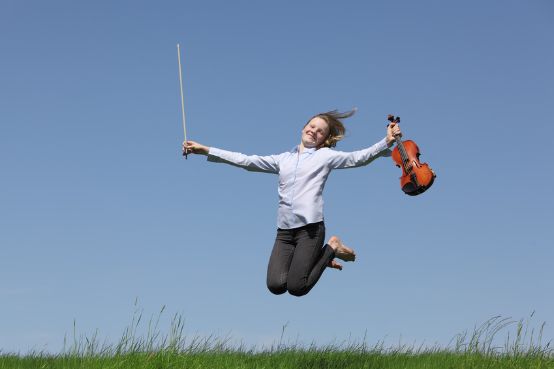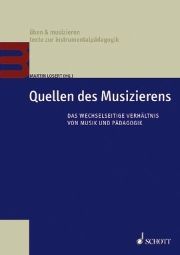Moments of happiness - reading and playing
How do musicians, professionals and amateurs, acquire their skills? Which learning paths are successful, which are less so. Why do some players stick with their instrument and others don't? An anthology explores this complex area.

It's so easy to say: music makes you smart, music is important, music is a must. But why is that so? And above all: how can we ensure that active music-making becomes a constant companion in life, that it doesn't fall silent in times when the "mundane" is obviously more important than daily practice on the instrument? The compendium Sources of music making provides answers, even many answers to many questions. Rarely has there been a collection of essays that deals with central questions of instrumental and vocal pedagogy in such a consistent and varied way. The 212 pages are a must for both parents and instrumental teachers.
Due to different personality profiles and individual developmental processes, it is not necessarily to be expected that there are any basic rules for instrumental teaching. Nonetheless, reading the book reveals tangible guidelines, including absolute no-gos. Supporting the child's intrinsic motivation is extremely important and can hardly be overestimated, while external pressure to perform is hardly a fertile soil in which children's passions can blossom. A particularly critical point is the relationship between the instrumental teacher and the parents, who - as is so often the case - try hard but make mistakes. In her essay "Parent AND teacher", Michaela Schwarzbauer addresses the important question of how support for the teacher at home works. In addition to theoretical discussions, an interview with professional violinist Benjamin Schmid gets to the heart of the matter. Schmid says: "The teacher must have a long-term strategy and has the greater experience of working with young children, knows what a curriculum for a season or a year can look like. My children's teachers know a lot of really good exercises and literature for children, they have knowledge that I don't have myself. (...) I don't think it's safe to mix the parent and teacher relationship too much." (S. 30)
In addition to practical tips such as these, the anthology offers fascinating background information. The probability that an instrument will be learned and played over a longer period of time increases if playing music at home is common practice, i.e. if music is an integral part of the family. The figures provided by Erik Esterbauer in his essay "Music begins in people" are astonishing. The earlier you start playing an instrument, the more likely it is that you will stick with it or stay with the keys or strings. Esterbauer refers to a 2012 study by the Society of Music Merchants e. V. and writes: "Only 7.4 percent of children who start playing music between the ages of three and five stop at some point. Among children under the age of three, the proportion of dropouts is as low as 0.3 percent." (S. 129)
The book so revealing Sources of music making cannot, of course, herald a turnaround and is limited to an (apparently ever smaller) circle of active music practitioners. However, one would very much like to see the volume distributed free of charge when children start school. It is hard to resist the beautiful descriptions of fulfilling moments of happiness that only active music-making can offer in this form.
Sources of music making. The reciprocal relationship between music and pedagogy, edited by Martin Losert, üben & musizieren UM 5020, 212 p., € 22.95, Schott, Mainz 2017, ISBN 978-3-7957-1252-5








